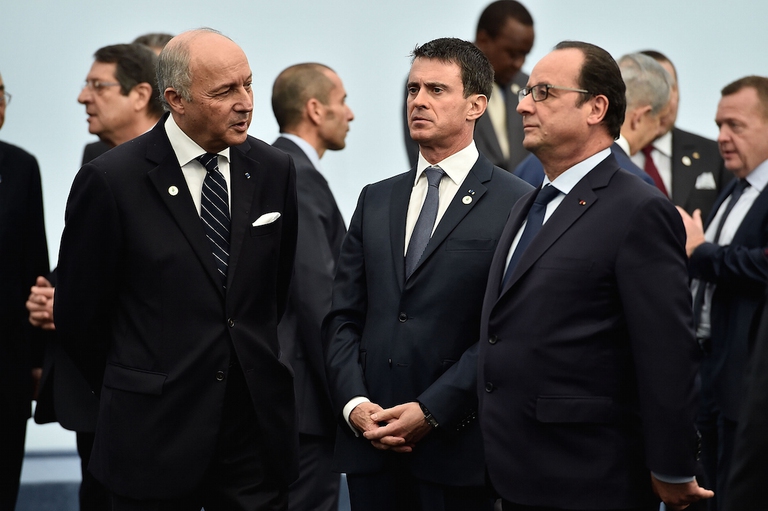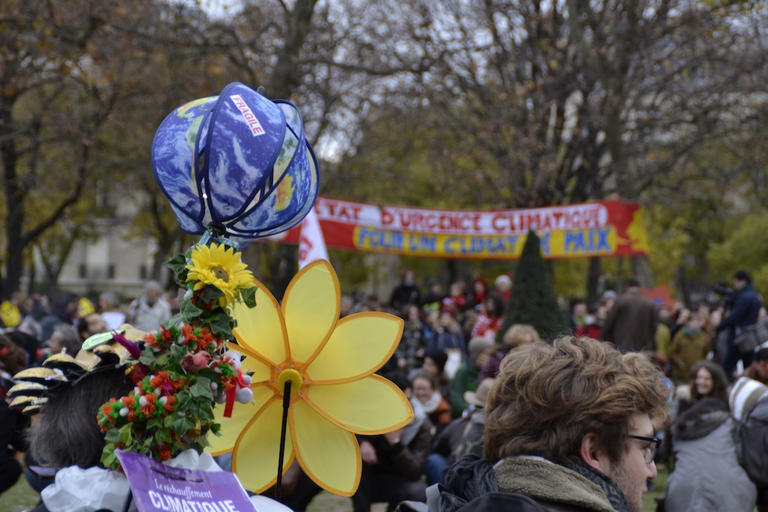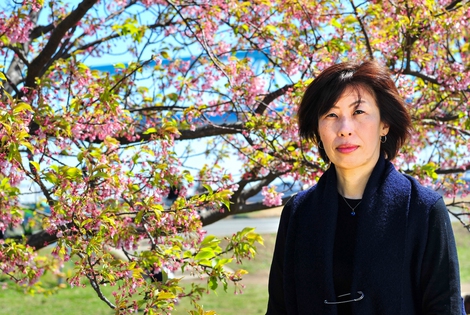
Three people putting the protection of the planet before themselves. Three powerful stories from Latin America, the deadliest region for environmental activists.
Dopo due settimane di negoziati, la Cop 21 ha concluso i suoi lavori. Il risultato è un testo che fa discutere esperti e associazioni.
Saturday, 7:32 p.m: the United Nations Climate Conference chairman, Laurent Fabius, after seeing there were no objections, struck the gavel and declared the adoption of the Paris Agreement.
The deal provides to limit the global average temperature rise “well below 2°C” and “pursuing efforts to limit the temperature increase to 1.5°C”. Therefore, the proposal of NGOs and countries most vulnerable to climate change (1.5 degrees) has not been accepted. Nevertheless, it has been mentioned, and this represents an undeniable success.
However, not everyone stepped out of Le Bourget with a smile on the face: “Rapid action to address climate change is a matter of survival for my Pacific people and as such, how can we accept any compromises?” said Krishneil Narayan, Coordinator of Pacific Islands Climate Action Network. “The Paris Agreement did not reflect all we asked, but Paris was never meant to be the last step. It was meant to be a progressive step in identifying new common grounds to address climate change together collectively through a new, universal agreement”. “The wheel of climate action turns slowly, but in Paris it has turned,” said Kumi Naidoo, Executive Director of Greenpeace International. This deal puts the fossil fuel industry on the wrong side of history”.
One of the most controversial points of the agreement is how the objective will be achieved. INDCs, i.e. the pledges submitted by some governments ahead of COP21, are not enough, in terms of greenhouse gas emissions reduction. Indeed, they will allow reaching +2.7 degrees, according to the French government. “Governments must strengthen their commitments to keep the rise of global temperatures below 2°C,” said Célia Gautier of Réseau Action Climat.
“Il faudra que les Etats renforcent leurs engagements pour parvenir à un réchauffement en deça de 2°C”. dit @CeliaGautier @RACFrance #COP21
— Réseau Action Climat (@RACFrance) 12 Dicembre 2015
For this reason, environmental associations demanded the concept of “decarbonisation” to be included into the document (it is not, due to the veto of Saudi Arabia and India) and a review of INDCs. Well, it has been decided that the first mandatory review (it is the only “binding” commitment of governments) will be in 2025. Later, it will be carried out every 5 years.
“C’est trop lent et trop peu ambitieux.” dit @jfjulliard de @greenpeacefr #COP21 #direct
— Réseau Action Climat (@RACFrance) 12 Dicembre 2015
“It’s a fraud really, a fake,” said US climatologist James Hansen to The Guardian. “It’s just bullshit for them to say: ‘We’ll have a 2C warming target and then try to do a little better every five years.’ It’s just worthless words. There is no action, just promises”. Similarly, Juillard of Greenpeace France said the process “is too slow and not ambitious enough”.
As for costs, the agreement recalls the amount presented in 2009 in Copenhagen: “100 billion dollars per year” by 2020 to help developing countries fight the effects of climate change and face damages and losses, adding that such figure is a minimum limit.
“Le plancher de 100 mds est inclus dans la décision de COP, donc l’objectif 2025 ne pourra pas aller en deçà.” @Armelle_LeComte @oxfamfrance
— Réseau Action Climat (@RACFrance) 12 Dicembre 2015
What is going to happen after 2020? A new objective will be set in 2025. NGOs disagree on timing: “the post-2025 is unclear, despite it is well known that the impact of climate change is increasing,” they argued.
“Après 2025, on a très peu de clarté, alors qu’on sait que les conséquences iront croissantes.” dit @Armelle_LeComte @oxfamfrance #COP21
— Réseau Action Climat (@RACFrance) 12 Dicembre 2015
Another problem is that the Paris Agreement does not make any reference to emissions linked to air and ship transports. That’s big deal, since they’re likely to represent 10% of global greenhouse gas emissions.
As for the legal form, is the agreement binding for those who subscribe it? Euro MP of The Greens Yannick Jadot told the newspaper Libération, “As for law and obligations, there’s a new governance regime that is not cogent enough. Nobody will be actually obliged to do anything. But it recognises the role of civil society, which will be able to lobby countries to act”.
Moreover, there will be no sanctions for those who ignore the agreement. Least of all, no court (or commission, or body) has been appointed to verify how countries take action. Therefore, the implementation of the terms of the agreement will be linked to the political will of each country.
For all these reasons, civil society’s opinion is heterogenous. According to Mohamed Adow of Christian Aid, “For the first time in history, the whole world has made a public commitment to reduce greenhouse gas emissions and deal with the impacts of climate change. Although different countries will move at different speeds, the transition to a low carbon world is now inevitable”. An idea shared by Michael Brune, Executive Director of Sierra Club: “The Paris agreement is a turning point for humanity”.
A little bit less enthusiast is Bill McKibben, Founder of 350.org: “Every government seems now to recognize that the fossil fuel era must end and soon. But the power of the fossil fuel industry is reflected in the text, which drags out the transition so far that endless climate damage will be done. Since pace is the crucial question now, activists must redouble our efforts to weaken that industry”. Similarly, Helen Szoke, Oxfam Executive Director, explained that “Only the vague promise of a new future climate funding target has been made, while the deal does not force countries to cut emissions fast enough to forestall a climate change catastrophe. This will only ramp up adaptation costs further in the future”.
The Paris Agreement will be deposited at the United Nations in New York on 22 April 2016. Starting from that moment, governments have one year to sign it: it will enter into force with the ratification of at least 55 countries, representing no less than 55% of CO2 global emissions.
Siamo anche su WhatsApp. Segui il canale ufficiale LifeGate per restare aggiornata, aggiornato sulle ultime notizie e sulle nostre attività.
![]()
Quest'opera è distribuita con Licenza Creative Commons Attribuzione - Non commerciale - Non opere derivate 4.0 Internazionale.
Three people putting the protection of the planet before themselves. Three powerful stories from Latin America, the deadliest region for environmental activists.
Influential scientist, activist and author Vandana Shiva fights to protect biological and cultural diversity, and against GMOs.
Kimiko Hirata has blocked 13 new coal plants in Japan, but she hasn’t done it alone. The 2021 Goldman Prize winner tells us about her movement.
The Goldman Environmental Prize, the “green Nobel Prize”, is awarded annually to extraordinary activists fighting for the well-being of the planet.
We talk to Shaama Sandooyea, activist and marine biologist from Mauritius onboard Greenpeace’s Arctic Sunrise ship in the heart of the Indian Ocean.
Arrested for supporting farmers. The alarming detention of Disha Ravi, a 22-year-old Indian activist at the fore of the Fridays for Future movement.
Water defender Eugene Simonov’s mission is to protect rivers and their biodiversity along the borders of Russia, China and Mongolia.
Chibeze Ezekiel, winner of the 2020 Goldman Environmental Prize for Africa, is fighting to guide new generations towards a renewable future.
Leydy Pech, winner of the 2020 Goldman Environmental Prize for North America, is the beekeeper who defended Mexican Maya land against the agro-industry.









